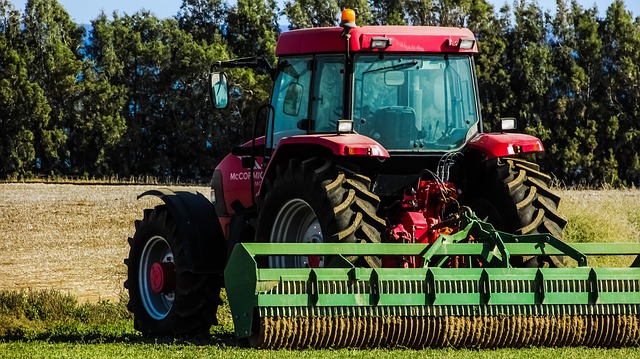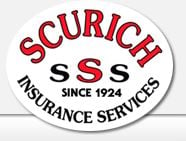
Even though farm machinery manufacturers try to ensure that their products are safe by equipping them with safety guards, agricultural work presents many hazards. Many times, workers suffer injuries because of human error from taking a shortcut, ignoring warning signs, not paying attention or not following safety rules.
Here are some of the most common farm machinery hazards, as well as several safety recommendations to reduce your risk of injury:
Shear Points and Cutting Points
- Shear points occur when the edges of two objects move close together and can cut soft material (example: auger).
- Cutting points occur when an object moves forcefully and is able to cut (example: sickle blade).
To avoid injuries, remain alert while operating machines with shear and cutting points. Also, advise others to watch out because some cutting machinery can throw objects while in use.
Pinch Points
- Pinch points are created when two rotating objects move closely together, one moving in a circle.
- Hands and feet can get caught in pinch points, or other body parts can get pulled into pinch points when loose clothing becomes entangled in the machine.
To avoid injuries, wear tight-fitting clothing and never reach over or work near rotating parts. Also, identify places where pinch points can occur and avoid these areas.
Wrap Points
- When exposed machine parts rotate, they create wrap points. Loose clothing can get caught in the moving parts, and consequently pull workers into the machine.
To avoid injuries, shield potential wrap points before beginning your work. If wrap points cannot be shielded, paint them a bright color to remind yourself that they are there.
Crush Points
- Crush points occur when objects move toward one another, or one object moves toward a stationary object. Workers can be crushed in between.
Block equipment securely to avoid fatal crushing injuries.
Free-wheeling Parts
- Some equipment with moving parts continues to spin after being shut off.
To avoid injuries, wait until the machinery has completely stopped before touching it. This can take several minutes.
Hydraulic Systems
- When servicing, adjusting or replacing parts on machines with hydraulic systems, workers can face high-pressure blasts of hydraulic oil. This can cause injury and/or burns to the skin.
To avoid injuries, do not inspect hydraulic hoses with your hands because the hydraulic fluids can puncture the skin.
Take time to become familiar with the potential hazards of the machinery you work with and remember to always put safety first!
Read more
 In most aspects of life there exists insurance to help in protecting assets in the case of damage or unfortunate loss. When it comes to farms this is no exception; however, the typical business insurance or ordinary car insurance will not meet the bar when it comes to insuring the farm and tractors. It is advisable that if your business is farming or you are thinking about purchasing a weekend farm getaway that you consult with an insurance professional with experience in farming.
In most aspects of life there exists insurance to help in protecting assets in the case of damage or unfortunate loss. When it comes to farms this is no exception; however, the typical business insurance or ordinary car insurance will not meet the bar when it comes to insuring the farm and tractors. It is advisable that if your business is farming or you are thinking about purchasing a weekend farm getaway that you consult with an insurance professional with experience in farming.
There is a famous saying that “knowing is half the battle,” so our goal is to review a few areas that have specific insurance needs. This way when you meet with an insurance professional you can get on the right track. As a general rule farm property is covered under specifically qualified policies to include farm machinery, livestock, farm trailers and even irrigation equipment. Depending on the coverage there may even be automatic coverage for new equipment up to $100,000 for the first 60 days – similar to a new born child being under the parents insurance until the child is individually registered. There are other types of equipment such as antennas and satellite radio devices typical on farms in extremely rural areas. In addition to coverage for these types of items there are other optional coverages that should be considered.
Depending on the exact type of farm things like chicken coups, silos, fences and feed racks have the ability to be covered under a farm policy. For those living in the city the details of a chicken farm and the equipment to keep it functioning are just not a reality. However for the farmer, these are essential aspects to their daily life. This is precisely why insurance companies carefully address all the details involved in farm life. Additional coverages are even defined as to the type of use of the equipment, because farm life can vary drastically.
One of our insurance professionals will review your farm and equipment to explain all available coverages and its intricacies.
Content provided by Transformer Marketing.
Read more
 U.S. farmers last week finalized their crop insurance plans for spring planting with critics of the government-subsidized program saying insurers are set up for a bonanza after passage of the new five-year farm bill last month.
U.S. farmers last week finalized their crop insurance plans for spring planting with critics of the government-subsidized program saying insurers are set up for a bonanza after passage of the new five-year farm bill last month.
Farmers who sign up for crop insurance by March 15 won’t, in fact, enjoy the enhanced subsidies of the new federal law, which go into effect with the 2015 crop year. But grain farmers in 2014 will still see up to two-thirds of their insurance premiums paid for by the government. Private insurance companies will also still benefit from the government as their “reinsurer,” an arrangement critics say limits their losses while boosting underwriting gains. With the new farm bill, the government’s largesse gets even bigger next year. “I think taxpayers lost on that farm bill for sure. There was lots of money that could have been saved to reduce the deficit, but they chose not to,” said Bruce Babcock, an agricultural economist at Iowa State University who has studied crop insurance for more than a decade. “The industry lobbies heavily,” Babcock told Reuters. “It’s just rub my back, I’ll rub yours.” A new farm bill was held up for more than a year by wrangling over cuts in food stamps and subsidized programs for the poor. Backers also touted cuts in direct payments to farmers estimated by the Congressional Budget Office (CBO) at $40 billion over 10 years. But 80 percent of those savings—some $33 billion, according to CBO data—reappear in the new farm bill as “enhanced” crop insurance, reformers say. “The crop insurance program survived essentially unscathed in this farm bill,” said Craig Cox of the Environmental Working Group, which sees U.S. farm policies as wasteful to taxpayers. “This was the first farm bill where there was a lot of attention paid to trying to reform the crop insurance program. None of those reforms made it into the final bill.” Crop insurers, on the other hand, praised the new law. “For the taxpayer, it eliminated direct payments and reduced some of the price support policies of the past in favor of expanding crop insurance, which is purchased by farmers on an individual basis,” David Graves, president of the American Crop Insurance Association, said in a written response to questions. “For crop insurance companies, the farm bill underscored the fact that crop insurance is the top risk management tool for America’s farmers and ranchers.” Read the entire
article here.
Content provided by: http://www.insurancejournal.com/news/national/2014/03/17/323445.htm
Read more
The new U.S. farm bill is already a year behind schedule so what’s one more month? Negotiators said that the work for the legislation to cut food stamps for the poor and expand crop insurance for farmers won’t be completed prior to Congress adjourning for the year. This farm bill will cover topics from farm exports and food aid to crop subsidies.
The delay is nothing new for the farm bill. Since mid-2012 Congress has asked for massive cuts in the food stamp program. The House is asking for the largest amount of cut with a $40 billion cut over the course of the next ten years. The Senate is a little more liberal with a recommended cut of $4.5 billion.
According to Insurance Journal,
“We will be ready to vote in January,” Debbie Stabenow, who chairs the Senate Agriculture Committee, told reporters.”
Many components of the farm bill are up in the air, including food stamps.
The Proposal
The new farm bill would spend some $500 billion over five years, three-quarters of it on food stamps.
Specifically, the Insurance Journal reports,
“Both chambers would trim spending on traditional farm subsidies, conservation programs and food stamps, while expanding outlays for crop insurance by up to 10 percent. One crop insurance proposal would assure grain and soybean growers of up to 90 percent of average revenue from a crop.”
Read the entire article here.
Content provided by http://www.insurancejournal.com/news/national/2013/12/11/313908.htm
Read more
At Scurich Insurance Services in Watsonville, we cater to the agriculture business at every level of production and service. If you run one machine or a hundred, we will be committed to being your premiere insurance agency. Our purpose is to provide the best value and service available, while maintaining the highest ethical standards with our clients, carriers, and the public. Some of our agricultural lines include:
- Agribusiness
- Hog Confinement
- Grain Elevators
- Feed Mills
- Livestock Feed Lots
- Custom Harvesting
Even if your business isn’t agriculture based, we can still help you with your commercial insurance needs. Contact us online, or give us a call at 1-800-320-3666.
Original content provided by Transformer Marketing

Scurich Insurance Services has proudly served the Monterey Bay area since 1924. Scurich will take care of all of your insurance needs. Are you a business owner, did you get a new car or maybe you are looking to protect your family in the event of a tragedy? Give us a call, we can help!
Let Scurich Insurance Services know if you are a Happy Customer!
We are located at:
Scurich Insurance Services
320 East Lake Avenue, PO Box 1170
Watsonville, CA 95077-1170
Office: 1-831-722-3541
Toll Free: 1-800-320-3666
Website | Facebook | Blog | LinkedIn | Happy Customer
Read more


 In most aspects of life there exists insurance to help in protecting assets in the case of damage or unfortunate loss. When it comes to farms this is no exception; however, the typical business insurance or ordinary car insurance will not meet the bar when it comes to insuring the farm and tractors. It is advisable that if your business is farming or you are thinking about purchasing a weekend farm getaway that you consult with an insurance professional with experience in farming.
In most aspects of life there exists insurance to help in protecting assets in the case of damage or unfortunate loss. When it comes to farms this is no exception; however, the typical business insurance or ordinary car insurance will not meet the bar when it comes to insuring the farm and tractors. It is advisable that if your business is farming or you are thinking about purchasing a weekend farm getaway that you consult with an insurance professional with experience in farming.
